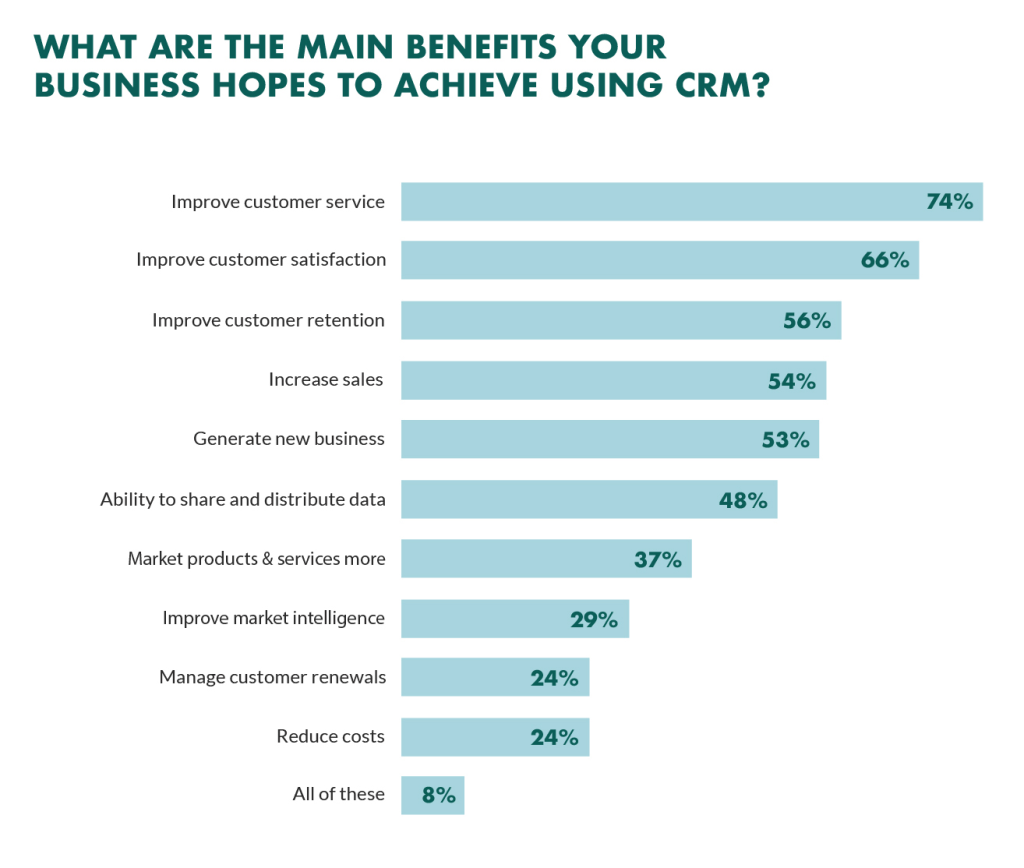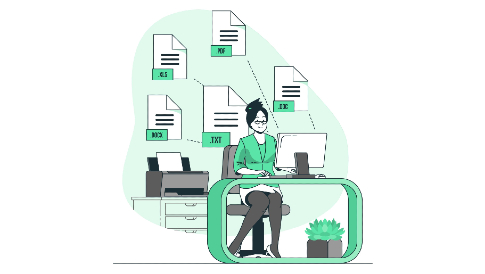How CRM Data Analysis Can Help Businesses Boost Sales
If you’re unfamiliar with CRM software, you’re missing out on a golden opportunity. CRM, or customer relationship management, is exactly what it sounds like —a platform businesses use to build stronger customer relationships. CRM platforms record phone calls, track emails and meetings, and compile data across your business into a single platform. That is why it’s so helpful. With all that information in one place, you can analyze it without cross-referencing multiple systems simultaneously. CRM data analysis helps you better understand how you engage with leads and customers across various touchpoints.
You can use those insights to improve customer service, marketing efforts, lead management, and sales. You can also use them to choose and allocate marketing budgets to different channels. This article will provide a framework for conducting a CRM data analysis. You’ll learn from relevant case studies and gain valuable insights to apply to your own business. But first, here are the four types of CRM data you should know.
Four Types Of CRM Data
Here’s a quick overview of the different types of CRM data:
- Identity CRM Data helps you identify each customer. It includes name, address, social media details, email, and telephone number.
- Qualitative CRM Data concerns customer attitudes, behaviours, and motivations related to buying decisions. The information is generally gathered through feedback and surveys.
- Quantitative CRM Data helps you understand how engaged the customer is with your business. It includes purchase history, order value, website visits, and social media engagements.
- Descriptive CRM Data helps you better understand the customer, their pain points, and their goals. A customer lifestyle profile includes information about online behavior, opinions, etc.
The customer data you gather through customer relationship management software helps you better understand your customer. You can use these insights to build accurate customer personas, create a journey map, and better understand the buying cycle.
Below is a list of other benefits of analyzing your CRM data.

In other words, you can improve sales performance, customer service, or marketing using CRM software.
How CRM Data Analysis Can Help You Generate More Sales
We’ve covered the categories of CRM data. Now it’s time to use this information to generate sales for your business. Below are some insightful examples from real businesses.
Reduces Your Marketing Costs
With CRM data analysis, you can discover great cross-sell and upsell opportunities. The data generate insights into customer buying behavior and patterns. You can act on them to run more effective marketing campaigns through your owned or earned marketing channels. For example, running paid social media campaigns to warm leads.
Here’s an example of a company that took this approach.

Hurst Review was running sales and marketing campaigns across various channels. They were generating valuable lead and customer data but didn’t have a centralized dashboard to track and analyze this information. Hurst Review transitioned to a CRM and collected data through a unified CRM platform. This transition helped them understand the user journey better. They could run targeted sales and marketing campaigns based on how leads interacted with various marketing and sales channels. Hurst saved 20% in marketing costs thanks to their CRM data analysis.
Boosts Your Email Marketing
Email is one of your most effective sales and marketing channels. You can use it to generate leads and convert prospects into customers. CRM software can help you spot engagement and sales patterns, enabling you to run more effective email marketing campaigns.
Let’s look at another real-life example. A&S Adria hosts security equipment exhibitions and runs two popular websites. By utilizing a CRM, they could segment users more effectively based on interactions with their company. For example, they could segment people who:
- Regularly attended events
- Had attended one event
- We’re on an email list but have never attended an event
The ability to segment people and send targeted emails based on how they engaged with the company meant prospects received more relevant messages. To ensure these targeted messages reach their intended recipients, businesses can verify the email addresses they send them. This is especially essential in B2B prospecting. Luckily, there are email finder tools with verification features they can leverage for this.
A&S Adria also utilized a custom reports dashboard to generate reports based on specific aspects of an account. For instance, they could see where a company was based, the number of employees, and annual revenue. Those insights meant sales reps could better tailor their approach to close sales. The dashboard also allowed team members to view their daily progress. The company saw a 10% increase in revenue in just four months.
Improves Productivity
The average sales rep spends only 35.2% of their time making sales. The rest of their time is spent on mundane tasks like creating prospect lists and following up with leads. If you can automate these tasks, the salesperson can spend more time selling.
Nestaway is an online rental home network based in Bengaluru, India. They used various digital marketing channels to generate leads for their business; the top three were their website, email list, and chatbot.

Leads generated through these channels were sent to the sales team. Nestaway struggled to manage leads through three different channels. It was an inefficient process that resulted in duplication and lost leads. As a result, they suffered from a high rate of lead leakage. By implementing a CRM, Nestaway could centralize its data collection. This made it easier to analyze trends and reduce lead leakage.
A smoother workflow and more sales helped Nestaway grow faster. The SAV to booking ratio (the number of website visitors to the number of people making bookings) increased by 2%, while the lead leakage was reduced by 70%. They now have a more efficient system, and their sales funnel improved by 20% month-on-month.
Data collection and analysis aren’t the only processes businesses should automate to enhance productivity and boost sales. The writing and sending of emails to potential customers can also be automated. Generative AI tools like Ask Writer and Google Bard can help businesses compose cold emails. They must insert the right prompts; the tool will create the content in seconds. Businesses can also use email marketing software to create automated workflows and schedule the sending of emails. This is way more efficient than just sending each email manually.

Ensures Better Sales Forecasts
Sales forecasts should provide insightful predictions about the trajectory of a business. CRM data and an appropriate forecasting model will give you a reasonably accurate sales forecast. However, you must ensure your data is clean, accurate, and timely.
Cartan Global, an events company, found it challenging to track its buying cycles even with a CRM solution in place. Data was in disarray. As a result, sales forecasts were inaccurate.
A management consulting firm hired to fix the system made several changes to the data. The firm mapped out the sales cycle and determined the minimal data needed to produce an accurate forecast at a per-sale level. It also segregated revenue acquisition into current and future payments in the system. After implementing those changes, the company improved sales forecasting while maintaining data integrity. Those forecasts informed Cartan Global’s business decisions.
Refines Your Customer Service
It doesn’t matter how good your product is; if the customer walks away from your business feeling they’ve had an unpleasant service experience, they’re unlikely to return. Whether selling high-end sports cars or running a burger van on an industrial estate, you want repeat customers. If your service is inefficient, complex, or poorly organized, the buyer will leave with a poor impression of your business.
That’s why a CRM is useful for creating good customer service. It can help identify how often your audience has called to raise a specific issue. You can use this information to create a business development strategy to resolve it, streamlining and improving your interactions. Additionally, most CRM tools can be synchronized with other automation programs (Google Sheets, for example), meaning you can easily integrate your data across multiple platforms.
Customer service is a big part of your brand identity. Every business wants its customers to speak highly of them, but that will not happen if you don’t get the buyer experience right. An improved customer experience is an important differentiator for your business. Use a CRM, multichannel contact centre, and other tools and resources to improve the customer experience. Some benefits of such an approach include improved customer retention and more word-of-mouth recommendations.
Cuts Down Your Cost Of Sales
Business leaders should always ask themselves how they can attract new customers. In an ideal world, finding new markets would be straightforward and cost-effective. Unfortunately, it costs up to seven times more to attract a new customer than keep an existing one.

That is natural; your existing customers will already trust your brand. CRM data can help you expand your customer base while increasing loyal regulars’ revenue. Here are just a few examples of how it can help you achieve that:
- Identifying upsell and cross-sell opportunities: CRM data can be used to identify customers likely to purchase additional products.
- Improving your sales abilities: get to know your customers’ needs and habits through CRM data. Knowing what your customers want, you can tailor products to market them more efficiently.
- Decreasing deal closure time: want to reduce the time spent on individual sales? CRM can help you spot chokepoints or weaknesses in the sales process. Eliminating or streamlining these points helps you decrease closure time.
- Identifying business referral opportunities: who are you more likely to trust regarding product recommendations? A cold-caller or an enthusiastic friend? Most people trust their friends and colleagues more than salespeople. You can use CRM data to identify and leverage potential referral opportunities among your existing customers.
That is achievable through CRM data analysis, so ignoring it would be a mistake.
It Helps You Find The Right Customer
We also can’t overlook how valuable CRM data can help find the right customers. Your marketing campaigns might attract hundreds, if not thousands, of prospects, but you’ll need to look at why if they’re not transferring into sales. Different platforms like email can be connected to your CRM systems. With this, you can send personalized marketing materials to increase your sales.
For example, if you run a greeting card company, you can identify which customers have significant events coming up and send them personalized emails. A discount on romantic gifts such as flowers might not appeal to a customer that’s been selected at random, but if they have a wedding anniversary coming up, the sale is more likely. You can also use CRM systems to track how many emails it takes before you land a sale. It can also show who visits your website, signs up for your newsletters, and interacts with your social media accounts. Maybe a specific demographic is more interested than others? CRM systems can help identify them, allowing you to focus your efforts appropriately.
An excellent example of this is Wells Fargo. They used CRM software to track their mentions across social media and used this to their advantage. It helped them identify cases where they were mentioned positively and negatively and then respond appropriately. That allowed them to quickly identify complaints and areas of opportunity and increase brand awareness. Their CMO spoke highly of the project, and it proved a real benefit for the company.
Conclusion
CRM software is a potent tool that helps you understand your customers, close sales, and boost brand loyalty. It can help with internal efficiency, too. But it’s not just about using a CRM. You must get your feet wet too. Dig deep into your CRM data to understand recurring patterns. These insights make all the difference and ensure your investment in a CRM platform is worthwhile.




Leave a Reply